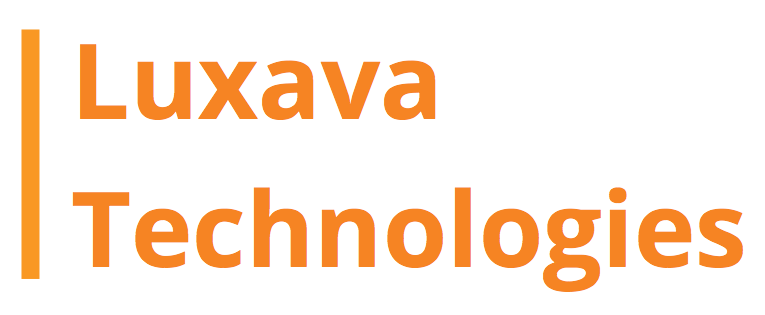Entrepreneurial Spirit & Community
Exhibits from the CUDOS spin-off companies, industrial partners and collaborators, in addition to highlighting examples of how CUDOS has connected its research to the efforts of other organisations, groups or the general public, including a collaborative art installation that explores the intersection of blood and silk in the preparation area of blood testing. Also meet several CUDOS alumni who have travelled from the UK, China, Thailand, USA and Europe!
Technology Transfer |
|
 |
Modular Photonics specialises in glass micro-chip fabrication including the development of state-of-the-art broadband mode multiplexers for space-division multiplexing. Our “plug and play’ technology can be used in data centres and other local area networks to increase the capacity and reach of the existing multimode fiber backbone, whilst offering cost-effective solutions. |
 |
Miriad Technologies specialise in the detection of mid-infrared light at high speeds. Our spectrometers are in almost every continent (Australia, Europe, North America, and South America) serving numerous applications such as monitoring rapid chemical reactions. Our latest Miriad S3 allows full coverage of the short-wave infrared, and would be ideal for photonics research at longer wavelengths (1-5 microns). |
 |
Luxava Technologies is currently working on Natama - a miniature, high performance frequency agile microwave filter technology. This filter is designed to deliver unique capabilities including the industry’s widest frequency tuning range combined with ultra-deep notch attenuation and tunable stopband width. Natama is well suited for applications using modern, frequency agile communications including electronic warfare, military communications, co-site interference cancellation, interference mitigation in satellite communications, and mobile test and measurements. |
| Australian Silicon Photonics’ novel devices will help data centre technology suppliers such as Intel, Broadcom, Cisco and Juniper increase data centre computing power and reduce power consumption by replacing electronic interconnects with photonic links. This will help our customers’ customers, the internet and cloud computing giants such as Facebook, Amazon, Google, Microsoft and Apple, support continued growth in today’s internet and cloud computing applications, and enable new applications such as autonomous vehicles and the internet of things. | |
 |
EMUstack is a simulation package for studying light’s interaction with multi-layered nanostructures. It integrates a finite element method mode solver with the scattering matrix method, making it ideal for studying lossy structures with large index contrast, such as photovoltaics, metamaterials and nanoplasmonics. The possible applications of EMUstack are vast and it has been released under the GNU General Public Licence. |
| |
Hotlight Systems presents its MIROPA-fs series of optical parametric amplifiers; both our original MIROPA-fs mid-infrared source and the new MIROPA-fs-M near infrared source. The new MIROPA-fs-M has been specifically designed for nonlinear microscopy with the major application being deep brain imaging in the neurosciences. Because of its simple and robust, patented travelling wave design, MIROPA-fs-M can replace two independent lasers, one for two-photon and one for three-photon imaging, by a single cost-effective source. |
 |
Nicslab novel devices will help academia and industry, such as data center, telecommunication and transportation providers, by increasing power efficiency and lowering infrastructure cost with smart electronic-photonic design, algorithm and control combined with the Internet of Things. This will help customers, such as researchers, to increase their research productivity, cloud service giants (Facebook, Amazon) to support growth in cloud computing applications, telecommunication providers (Telstra, Vodafone) to provide better communication services and railway providers (Sydney Train, Amtrak) to enhance safety. |
Collaborators |
|
 |
ANFF, established under the National Collaborative Research Infrastructure Strategy (NCRIS), provides researchers and industry with access to state-of-the-art fabrication capabilities through a network of 8 nodes across 21 institutions throughout Australia. The OptoFab Node provides services & technical support to users in microprocessing, microfabrication and characterisation of fibre, planar and bulk materials which include silica, metals, ceramics, silicon, polymers and crystals. OptoFab services have proved beneficial for applications in telecoms, biotechnology, biomedicine, microelectronics, optical sensing, industrial processing, defence and security. |
 |
Finisar is a global technology leader in optical communications. Finisar's world-class products enable high-speed voice, video and data communications for networking, storage, wireless, and cable TV applications. For more than 25 years, they have created critical breakthroughs in optics technology and supplied system manufacturers with the production volumes needed to meet the exploding demand for network bandwidth. Finisar's industry-leading products include optical transceivers, optical engines, active optical cables, optical components, optical instrumentation, ROADM & wavelength management, optical amplifiers, and RF-over-Fiber. |
 |
The NSW Smart Sensing Network (NSSN) brings together smart sensing expertise from academia, industry and government to develop a strong, collaborative and innovative network that will deliver economic and social benefits for New South Wales. To meet NSW’s sensing challenges, NSSN is matching world-leading research with the needs of industry, government and other stakeholders, working on a number of projects of statewide significance. The NSSN is open to new challenges in the sensing space no matter how big or small, long or short a project. |

|
The Australian Institute for Nanoscale Science and Technology (AINST)
brings together the University of Sydney's collective academic expertise in nanoscale research in a purpose-built facility - the Sydney Nanoscience Hub. ANST is producing transformative scientific outcomes that generate new knowledge and impact society and the economy. The research is grouped into three themes that directly address societal challenges and will help build a knowledge and technology-based economy; energy and environment, health and medicine, communications, computing and security. |
Outreach & Community |
|

|
SunTenants is a Myer Foundation backed start-up that is incentivising landlords to install solar power on their rental properties, enhancing the property for everyone: the property owner, the tenant and the property manager. SunTenants rents solar systems from landlords providing them with returns on their investment of over 10%. SunTenants sells the generated solar power to tenants at 20% lower rates than their existing retailer, saving them hundreds of dollars per year. |
 |
The Australian Optical Society (AOS) is a non-profit organisation for the advancement of optics in Australia. Formed in 1983, the Society aspires to provide a forum for persons involved in or in any way interested in optics; to strengthen the teaching of optics in Australia; to promote research and other activities in optics in all its diversity; and to foster closer collaboration in optics both nationally and internationally. |
 |
The Institute of Photonics and Optical Science (IPOS) draws together research and teaching expertise across the Schools of Physics, Electrical and Information Engineering, Mathematics, Chemistry and the Electron Microscope Unit in the University of Sydney. The Institute’s mission is to provide Australia with innovation, scientists and engineers to maintain and enhance a position of world-leadership in photonics in academia and industry, and to be the region’s leading provider of photonics research and education. IPOS' research spans all areas of optics and photonics, both fundamental and applied. |
 |
INCUBATE
is an award-winning startup program at the University of Sydney that
fund students, alumni and researchers to launch high-potential startups
through our accelerator program and support student entrepreneurs
through their community activities. INCUBATE has launched over 60 startups and
created value worth $50 million. |
 |
Blood on Silk
is a cross-disciplinary collaborative project of ideas between CUDOS physicist, the late Dr Peter Domachuk, and Fiona Davies, a visual artist. Its foundation is a research project undertaken by Peter to develop an implantable silk microchip that would provide a platform within the human bloodstream allowing the properties of blood cells to be measured while those cells are still within the body – a biophotonic chip. Since 2001, Fiona has worked with ideas of medicalised death and particularly the rituals in an intensive care ward involved in taking daily samples of blood. This exhibition represents the intersection of their collaboration. |
 |
CUDOS Lights up the Classroom and the Outback! CUDOS' Outreach mission is to promote CUDOS and its research to secondary students and teachers, and stimulate interest and encourage wider participation in physics in years 7-11. CUDOS' Outreach team loves talking to students about photonics, light and telecommunications! This display features examples of the interactive demonstrations the outreach team takes into the classroom and showcases the very successful “Outback” initiative - where a team of CUDOS students travel to rural Australian high schools to provide pupils with opportunities to experiment with hands-on optical demonstrations they would not otherwise have access to and meet uni students. |


